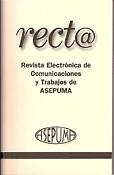Maximum Potential Score (MPS): An operating model for a successful customer-focused strategy
Palabras clave:
Relationship Marketing, Net Promoter Score (NPS), Maximum Potential Score (MPS), customer-focused strategy, customer satisfaction surveyResumen
One of marketers’ chief objectives is to achieve customer loyalty, which is a key factor for profitable growth. Therefore, they need to develop a strategy that attracts and maintains customers, giving them adequate motives, both tangible (prices and promotions) and intangible (personalized service and treatment), to satisfy a customer and make him loyal to the company. Finding a way to accurately measure satisfaction and customer loyalty is very important. With regard to typical Relationship Marketing measures, we can consider listening to customers, which can help to achieve a competitive sustainable advantage. Customer satisfaction surveys are essential tools for listening to customers. Short questionnaires have gained considerable acceptance among marketers as a means to achieve a customer satisfaction measure. Our research provides an indication of the benefits of a short questionnaire (one/three questions). We find that the number of questions survey is significantly related to the participation in the survey (Net Promoter Score) or NPS. We also prove that a the three question survey is more likely to have more participants than a traditional survey (Maximum Potential Score or MPS) . Our main goal is to analyse one method as a potential predictor of customer loyalty. Using surveys, we attempt to empirically establish the causal factors in determining the satisfaction of customers. This paper describes a maximum potential operating model that captures with a three questions survey, important elements for a successful customer-focused strategy. MPS may give us lower participation rates than NPS but important information that helps to convert unhappy customers or just satisfied customers, into loyal customers.
Descargas
Publicación Facts
Perfil de revisores N/D
Información adicional autores
Indexado: {$indexList}
-
Indexado en
- Sociedad Académica/Grupo
- N/D
- Editora:
- UMA Editorial. Universidad de Málaga
Descargas
Publicado
Cómo citar
Número
Sección
Licencia

Esta obra está bajo una licencia internacional Creative Commons Atribución-NoComercial 4.0.





